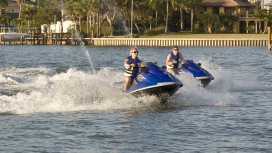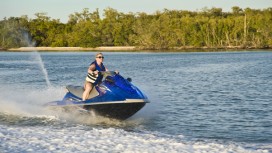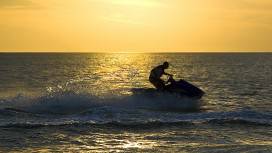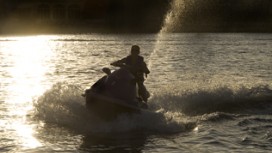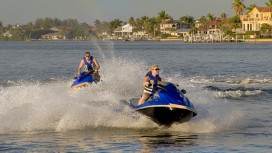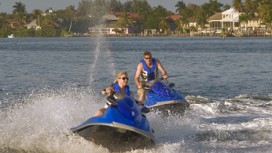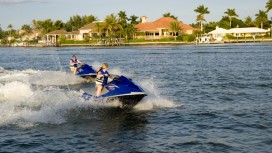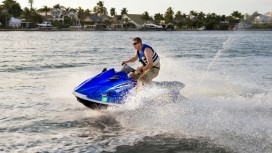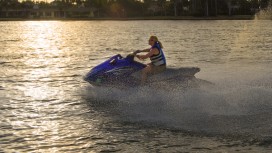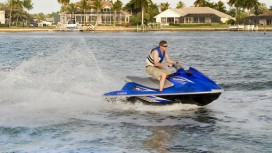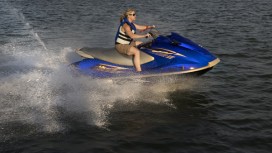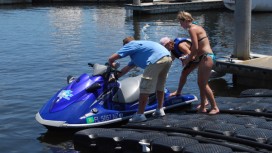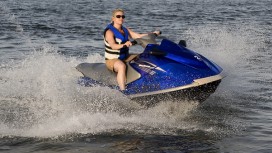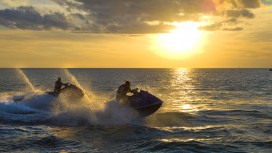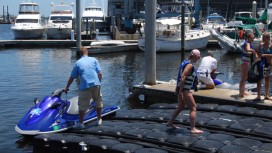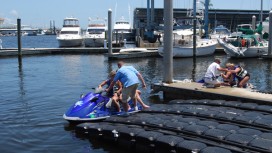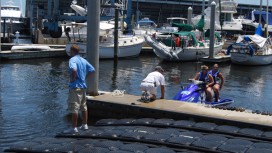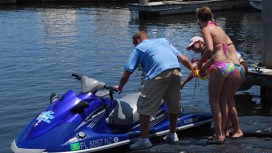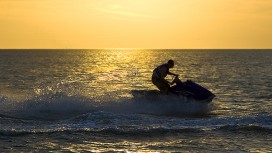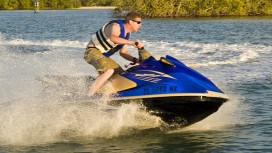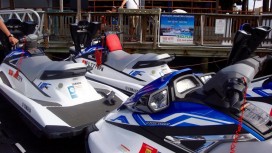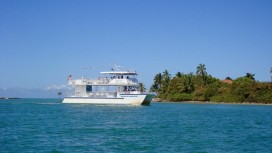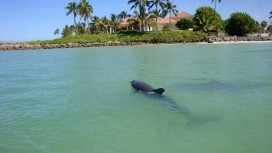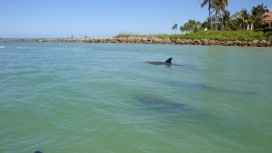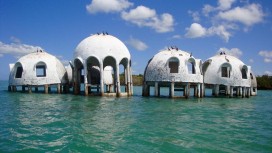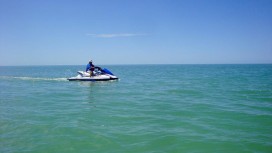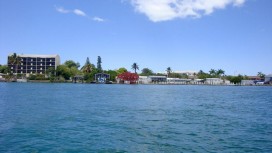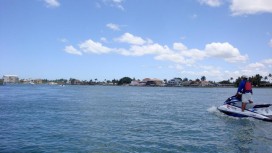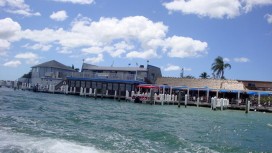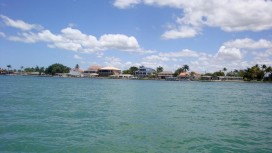
JET SKI RENTALS NAPLES
JetSki 101 Water craft
- Jet drives propel a vessel by a jet of water forced out of the back of the vessel. Directing this jet of water steers the vessel.
- Personal watercraft is the most common type of vessels that use a jet drive.
- Jet drives may also power larger vessels and are used commonly for vessels designed for shallow water conditions.
Jet drives use an engine to power a strong water pump, which sucks up water and forces the water out the back to thrust the vessel forward.
Personal Watercraft (PWC)
A PWC is a small vessel that uses an inboard jet drive as its primary source of propulsion, and is designed to be operated by a person or persons sitting, standing, or kneeling on the vessel rather than inside the vessel. The U.S. Coast Guard includes personal watercraft in the group of inboard vessels less than 16 feet in length.
PWCs are subject to all of the same laws and requirements of any other vessel plus a few laws specific to PWCs.
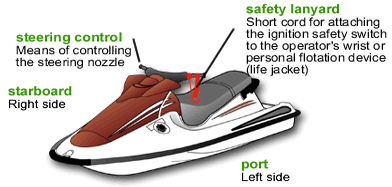
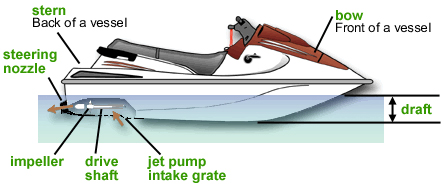
- Stern: Back of a vessel
- Bow: Front of a vessel
- Draft: Depth of water needed to float a vessel
- Intake: Opening in the hull that draws water toward the impeller
- Intake grate: Screening cover over the intake, which prevents large debris from entering
- Drive shaft: The long stem connection between the handlebars and the impeller
- Impeller: Device used to force water in a desired direction under pressure
- Steering nozzle: Device used for directing the stream of water to the left or right at the stern of the PWC, which steers the PWC
Operating a Personal Watercraft
Although a personal watercraft (PWC) is considered an inboard powerboat and operators must follow the same rules and requirements that apply to any other power-driven vessel, there are specific considerations for the PWC operator.
Steering and Stopping a PWC
As discussed, most PWCs have a steering nozzle at the back of the unit. The nozzle is controlled by a handle bar that directs the stream of water from right to left. When the steering control is turned right, the steering nozzle is turned right. The force of the water stream leaving the nozzle then pushes the back of the vessel to the left, which causes the PWC to turn right.
The most important thing to remember about steering most PWCs, and other jet-drive vessels, is that you must always have power in order to maintain control. If you allow the engine to return to idle or shut-off during operation, you lose all steering control. The PWC will continue in the direction it was headed before the throttle was released or the engine was shut off, no matter which way the steering control is turned. Always allow plenty of room for stopping. Just because you release the throttle or shut off the engine does not mean you will stop immediately.
Before You Go Out On Your PWC
Operating a personal watercraft carries the same responsibilities as operating any other vessel. Before taking your PWC out on the water you should:
- Read and understand the owner’s manual.
- Take time to review the video most PWC manufacturers provide.
- Inspect your PWC periodically and perform necessary maintenance to keep it in good operating condition.
- Be aware of all local, state and federal laws that apply to PWCs.
Do not forget that in addition to obeying all boating laws, the PWC operator must adhere to laws specific to personal watercraft.Do not operate a PWC in shallow water. Doing so damages both your PWC and the environment.
Environmental Considerations
When operating your personal watercraft, always consider the effect you may have on the environment:
- Do not operate a PWC in shallow water. Bottom sediments or aquatic vegetation can be sucked into the water pump and damage your PWC and the environment.
- Operate at slow speed and avoid creating a wake, which can cause erosion when operating near shore or in narrow streams or rivers.
- Do not dock or beach your PWC in reeds and grasses. This could damage fragile environments.
- Take extra care when fueling your PWC in or near the water. Oil and gasoline spills are very detrimental to the aquatic environment. Fuel on land if possible.
Never use your PWC to disturb, chase or harass wildlife.
Reboarding a Capsized PWC
PWCs are designed to allow you to fall off and reboard from the rear of the craft. Sometimes after a fall, the PWC could be completely overturned. When this occurs, you should be familiar with the proper procedure to right the PWC.
- Most manufacturers have placed a decal at the rear or bottom of the craft that indicates the direction to roll your PWC to an upright position. If no decal exists, check your owner’s manual or ask the dealer. With this information you should be able to roll the PWC over and reboard with little trouble. If you roll it over the wrong way, you could cause serious damage to your PWC.
- It is a good idea to practice reboarding with someone else around to make sure you can handle it alone. Also, avoid riding your PWC when you are very tired, because reboarding will be difficult. Also avoid riding where there are strong currents or winds, which could hamper your reboarding efforts.
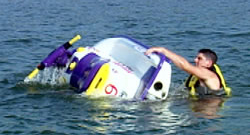
Reboarding a PWC |
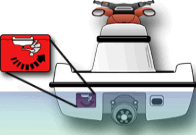
Look for the decal on the rear of the PWC to determine |
Because a PWC is very maneuverable it is possible for a PWC to get into trouble fast. Here are some important things to do when operating a PWC:
- Do not ride too closely behind another PWC. If it turns sharply or if it stalls you could collide with it; if the other rider falls off you could run over him or her.
- Always look behind you over both shoulders before making turns; another vessel may be too close behind you.
- Be aware of all traffic in your boating area; don’t focus just on the short distance ahead.
- Always remember that operating a PWC has the same responsibilities as operating any other vessel.

